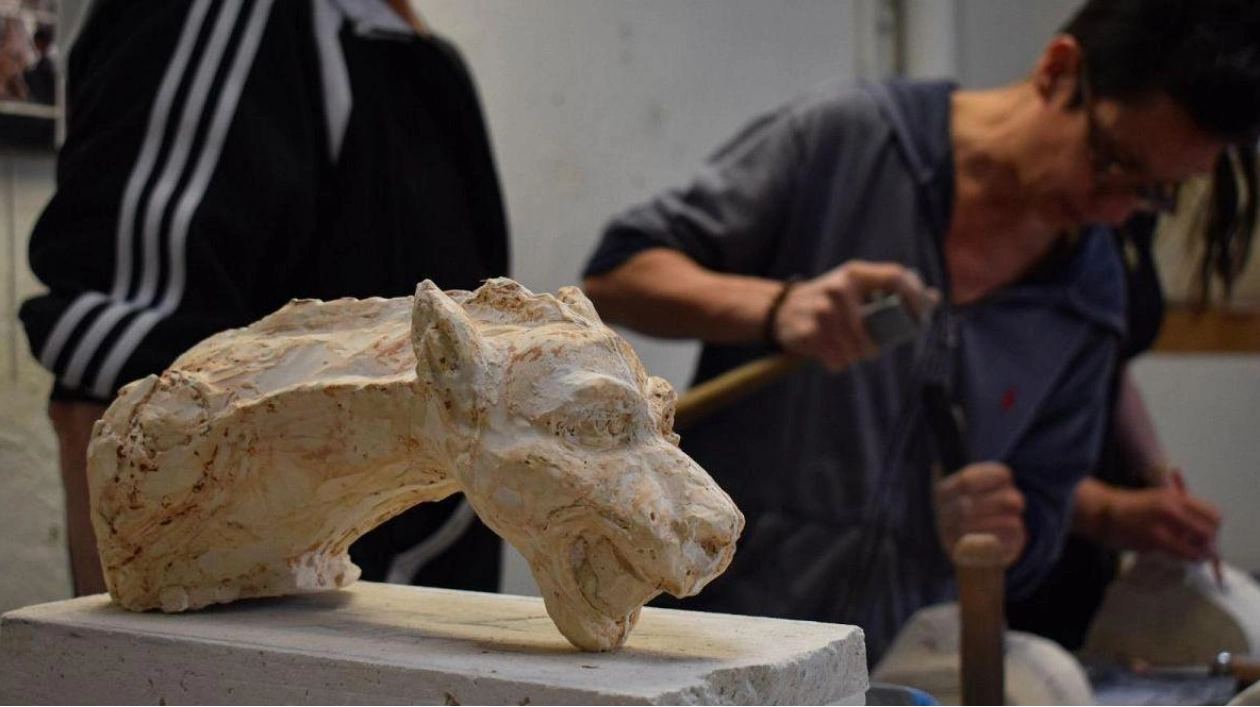As the world’s most famous cathedral prepares to reopen its doors on December 8th, the gargoyles are back, but this is far from their first makeover. The gargoyles are arguably the most famous part of Notre-Dame Cathedral, but it may come as a surprise that the gruesome-faced statues most of us associate with Notre-Dame are not gargoyles. The majority of these statues were carved after the publication of Victor Hugo’s novel, 'The Hunchback of Notre-Dame'. Notre-Dame began construction in 1163, but it was not until 1260 that the cathedral was considered complete. Before the 2019 fire, it was one of the most-visited sites in Paris, attracting around 13 million visitors annually. However, in the early 19th century, Notre-Dame was in a much worse state than it is today, just six weeks before its reopening.
Gargoyles entered popular culture with Hugo’s 'The Hunchback of Notre-Dame'. Contrary to what many Disney fans might remember, the gargoyles in Hugo’s novel were minor characters. While Quasimodo would often speak to the statues in his solitude, they never spoke back. Disney’s version popularized the animated ‘gargoyles’ of Victor, Hugo, and Laverne, which are actually chimeras, decorative statues with grotesque faces. A gargoyle is functional, with a spout in its mouth to evacuate water from the drains. The original gargoyles are believed to have existed since at least 600 CE, according to folklore.
One of the most famous and earliest tales about a gargoyle is from Rouen, Normandy,” says Dr. Andrew Marr, historian and founder of Visit Auvergne. “The story goes that during the 7th century, Rouen was under the dominion of a voracious, dragon-like creature called la gargouille. To keep him satisfied, the inhabitants would offer up people as sacrifices. This gruesome rite continued until a brave Christian cleric named Romain confronted la gargouille and captured it. It was burnt on a pyre and its head strung up from the town’s wall to commemorate their triumph. Later, sculptors used this devilish taxidermy mount as inspiration for their own gargoyle designs.”
The chimeras we now associate with Notre-Dame (and the prototype for the Disney characters) date from the mid-19th century. Hugo’s 'The Hunchback of Notre-Dame' was published in 1831 and sparked renewed interest in the cathedral, which was falling into disrepair. This galvanized a massive renovation project that lasted 21 years, from 1843–64, making the current five-year renovation look relatively speedy. Inspired by Hugo, sculptors Eugène Viollet-le-Duc and Jean-Baptiste-Antoine Lassus added 56 new chimeras to Notre-Dame’s façade and replaced and repaired many of the original gargoyles.
This time around, roughly 1,000 artisans have been involved in Notre-Dame’s renovations, including a team of sculptors working on the gargoyles and chimeras. Outside Notre-Dame, the free photo exhibition ‘Les Visages du Chantier’ will remain until December 31st, showcasing the many people who have brought the cathedral back to life. The fascination with chimeras and gargoyles that Hugo revived almost 200 years ago is only growing, especially with the anticipation around Notre-Dame’s reopening. Sculptor Cécilia da Mota has never been busier. In her studio in Belleville, east Paris, she teaches her students to carve their own Notre-Dame style chimera, using the same limestone from the same quarry used for Notre-Dame’s own chimeras, La Carrière du Clocher in Bonneuil-en-Valois.
In as little as two days, participants can carve a lion’s head; a chimera takes a bit longer. Testing out the workshop in Belleville, I look as though I’ve sneezed into a bag of flour, with limestone dust everywhere. The block of stone has to be chipped and sliced away—there’s no sticking or adding. Once we’ve sawed our blocks into the rough shape of our respective lions or gargoyles heads, the smaller indentations are made with a pick and hammer. For the finer details, there are varying sizes of metal files, and the clouds of dust keep coming, leaving dusty handprints on our clothes and coating the fine hairs on our faces. As some of us work on lion’s heads and others on chimeras, there are plastic lions, photos of chimeras and lions, and plaster models to serve as inspiration. We’re all working from the same inspiration and under the same instruction, and chimeras were meant to be grotesque and scary-looking to ward off evil spirits, but some of our results are much more Simba than Scar.
Photos around the studio show da Mota working on chimeras for historical monuments all around the country, and several sculptures of stone labia. Chimaera-carving isn’t always a full-time gig, and da Mota also makes sculptures for gynaecologists. The grotesqueness of the faces of both chimeras and gargoyles are widely thought to have been a way to ward off evil spirits, and da Mota says that her workshops often feel like a form of art therapy. “I have plenty of clients that are unhappy or unfulfilled in their jobs,” says da Mota. “Working the stone gives them a creative outlet.” Perhaps this is the only way in which chimeras can be said to ward off demons, however, as Marr says it’s more likely that gargoyles and chimeras represent the demons rather than a way to deter them.
“In the Middle Ages, Satan was seen as the prince of the powers of the air, so they may be representations of aerial demons,” he says. “Another theory is that they’re a form of iconography, and that they represent sinners or demons that God has turned to stone. This echoes the Biblical story of Lot's wife, who was transformed into a pillar of salt when defiantly looking back on the doomed city of Sodom.” Although Notre-Dame will be open to the public from December 8th, with the newly carved gargoyles and chimeras in place, parts of the cathedral, including the towers and treasury, won’t open until 2026. Reservations for the newly-opened Notre-Dame are due to open in late November, and will be booked via an app organized by the city tourism board. Tickets have, and always will be, free, so be wary of scam sites.
Source link: https://www.euronews.com






